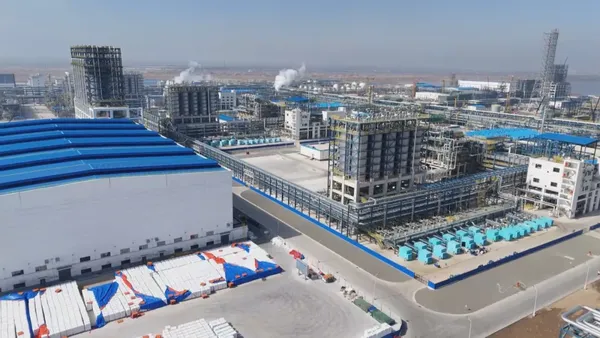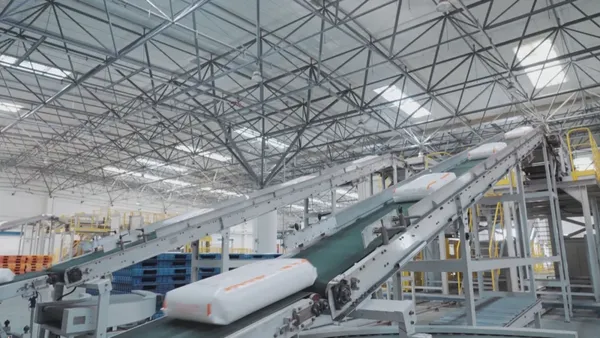World's First! Shenghong's Total EVA Capacity to Reach 1 Million Tons/Year!
The Shenghong Chemical New Materials Project is a major industrial project in Jiangsu Province, with a total investment of about 21.6 billion yuan, planning to construct an annual production capacity of 700,000 tons of EVA, 50,000 tons of high-end polyolefins, as well as projects for propylene oxide, styrene, and polyols.
Recently, the construction of the EVA facility in the project has progressed rapidly, with the second unit entering the trial production phase, and the third one also under intense construction. It is expected that upon full completion, Shenghong Petrochemical's total EVA production capacity will reach 1 million tons per year, ranking first in the world.

It is understood that the Shenghong Chemical New Materials project includes five sets of EVA (ethylene-vinyl acetate copolymer) equipment, three tubular EVA and two autoclave EVA, with an annual production capacity of 600,000 tons of EVA after full construction. Currently, the first set of EVA equipment has been put into production on October 27, 2024, and at the end of this month, the second set of EVA equipment will enter the trial production phase, while the third set of EVA equipment is under intense construction.

Shenghong Group's EVA-related layout
under construction EVA
On March 28, 2023, Dongfang Shenghong announced that its third-level wholly-owned subsidiary, Jiangsu Hongjing New Materials Co., Ltd., is investing in the construction of the Shenghong Chemical New Materials Project (Phase I), which includes a 600,000 tons/year photovoltaic-grade ethylene-vinyl acetate copolymer (EVA) facility.
proposed EVA project
-
500,000 tons/year EVA project (Phase II)
According to previously disclosed information, the total investment for the 500,000 tons/year EVA project is 6.964 billion yuan, with the project being constructed in phases. The total investment for the first phase of the project is approximately 4.909 billion yuan, and the total investment for the second phase is 2.055 billion yuan.
-
advanced copolymer new materials project (phase two)
The high-end copolymer new material project (phase two) has a total investment of approximately 1.607 billion yuan, with plans to build one 50,000 tons/year high-end copolymer new material facility. After completion, the same production facility will achieve an annual output of 30,000 tons/year EVA, 10,000 tons/year EnBA, and 10,000 tons/year EMAA; simultaneously, it will produce 2,000 tons/year crude ethylene, 400 tons/year reaction oligomers, 80 tons/year SC material, and 40 tons/year polymer derivatives (wax).
【Copyright and Disclaimer】The above information is collected and organized by PlastMatch. The copyright belongs to the original author. This article is reprinted for the purpose of providing more information, and it does not imply that PlastMatch endorses the views expressed in the article or guarantees its accuracy. If there are any errors in the source attribution or if your legitimate rights have been infringed, please contact us, and we will promptly correct or remove the content. If other media, websites, or individuals use the aforementioned content, they must clearly indicate the original source and origin of the work and assume legal responsibility on their own.
Most Popular
-

List Released! Mexico Announces 50% Tariff On 1,371 China Product Categories
-

Nissan Cuts Production of New Leaf EV in Half Due to Battery Shortage
-

New Breakthrough in Domestic Adiponitrile! Observing the Rise of China's Nylon Industry Chain from Tianchen Qixiang's Production
-

Mexico officially imposes tariffs on 1,400 chinese products, with rates up to 50%
-

Dow, Wanhua, Huntsman Intensively Raise Prices! Who Controls the Global MDI Prices?






